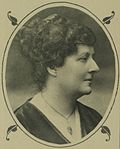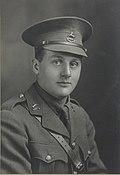| Waterloo |
|---|
Former Borough constituency
for the House of Commons |
| 1918–1950 |
|---|
| Number of members | one |
|---|
| Replaced by | Crosby |
|---|
| Created from | Southport |
|---|
Waterloo was a parliamentary constituency centred on the district of Waterloo north of Liverpool in Lancashire. It returned one Member of Parliament (MP) to the House of Commons of the Parliament of the United Kingdom, elected by the first past the post system.
History
The constituency was created for the 1918 general election. It was abolished for the 1950 general election.
Boundaries
The Urban Districts of Great Crosby, Litherland, Little Crosby, and Waterloo with Seaforth.
Members of Parliament
| Year | Member | Party |
| | 1918 | Albert Buckley | Unionist |
| | 1923 | Malcolm Bullock | Unionist |
| 1950 | constituency abolished |
Election results
Elections in the 1910s
General election 1918: Waterloo[1] | Party | Candidate | Votes | % | |
| C | Unionist | Albert Buckley | 13,255 | 83.5 | |
| | Labour | Samuel Reeves | 2,619 | 16.5 | |
| Majority | 10,636 | 67.0 | |
| Turnout | 15,874 | | |
| | Unionist win (new seat) |
| C indicates candidate endorsed by the coalition government. |
Elections in the 1920s

Stewart-Brown
General election 1922: Waterloo | Party | Candidate | Votes | % | |
| | Unionist | Albert Buckley | 12,967 | 67.3 | -16.2 |
| | Liberal | Nessie Stewart-Brown | 6,300 | 32.7 | New |
| Majority | 6,667 | 34.6 | -32.4 |
| Turnout | 19,267 | 69.4 | +2.4 |
| | Unionist hold | Swing | N/A | |
General election 1923: Waterloo [2] | Party | Candidate | Votes | % | |
| | Unionist | Malcolm Bullock | 10,615 | 51.2 | -16.1 |
| | Liberal | Robert Lowden Connell | 9,965 | 48.4 | +15.7 |
| Majority | 650 | 2.4 | -32.2 |
| Turnout | 20,580 | | |
| | Unionist hold | Swing | -16.1 | |
General election 1924: Waterloo [3] | Party | Candidate | Votes | % | |
| | Unionist | Malcolm Bullock | 15,704 | 72.0 | +20.8 |
| | Labour | George Frank Titt | 6,116 | 28.0 | New |
| Majority | 9,588 | 44.0 | +41.6 |
| Turnout | 21,820 | | |
| | Unionist hold | Swing | N/A | |

Sellars
General election 1929: Waterloo [4] | Party | Candidate | Votes | % | |
| | Unionist | Malcolm Bullock | 17,299 | 52.1 | -19.9 |
| | Labour | John Clifford Leigh | 8,142 | 24.5 | -3.5 |
| | Liberal | Frederic Aked Sellars | 7,728 | 23.3 | New |
| Majority | 9,157 | 27.6 | -16.4 |
| Turnout | 33,169 | | |
| | Unionist hold | Swing | -8.2 | |
Elections in the 1930s
- 1931 United Kingdom general election: Malcolm Bullock unopposed[5]
- 1935 United Kingdom general election: Malcolm Bullock unopposed[6]
Elections in the 1940s
General election 1945: Waterloo | Party | Candidate | Votes | % | |
| | Conservative | Malcolm Bullock | 19,650 | 47.4 | N/A |
| | Labour | Philip Vos | 13,795 | 33.3 | New |
| | Liberal | Joseph Daniel Weir | 7,823 | 18.8 | New |
| | Independent | Cyril Foster | 195 | 0.5 | New |
| Majority | 5,855 | 14.1 | N/A |
| Turnout | 41,463 | | |
| | Conservative hold | Swing | -8.2 | |
References
- ^ Debrett's House of Commons and the Judicial Bench
- ^ The Times House of Commons, 1929
- ^ The Times House of Commons, 1929
- ^ The Times House of Commons, 1929
- ^ Election results 1931 PoliticsResources
- ^ Election results 1931 PoliticsResources

